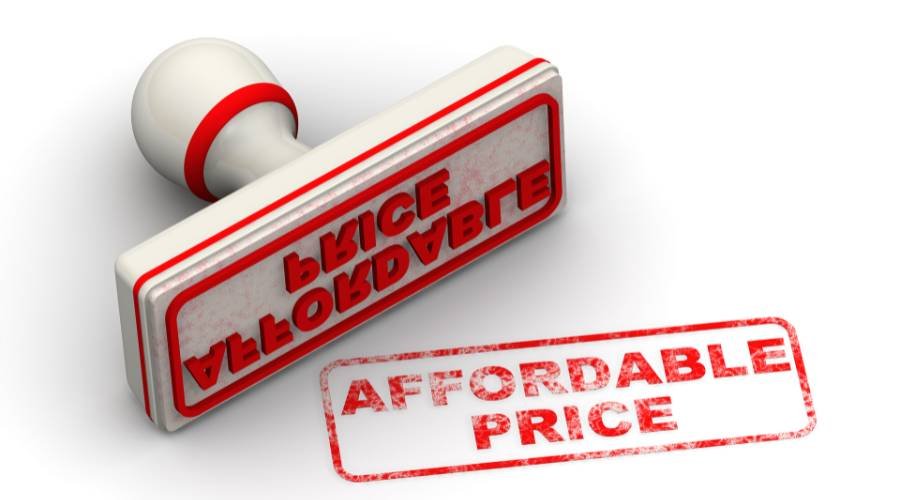In Australia, managing social media can be overwhelming. We deal with many accounts and new content daily. That’s why a good social media plan and calendar are key to our success.
Ever wonder how some manage their social media well despite many tasks? The answer is social media scheduling.
Key Takeaways
- A social media calendar is a detailed plan of posts for all your channels, sorted by date and time.
- Keeping a calendar saves time and keeps your posts consistent. It also ensures quality and safety and helps your team work better together.
- It’s great for planning big events or campaigns. It helps everyone know when and what to post.
- With a calendar, you can easily share successful content again. This saves time and keeps your audience interested.
- Using a calendar to schedule posts helps catch mistakes early. This protects your brand’s image.

What is Social Media Scheduling?
Social media scheduling means planning and setting up posts for different platforms ahead of time. It helps with time management, keeps your online presence steady, and improves your social media strategy. With scheduling, you can plan your content calendar without the rush of posting live. This ensures your posts are consistent and meet your marketing goals.
Definition and Benefits
Social media scheduling lets you organize your content in advance. This boosts audience engagement and saves time. The main benefits include:
- Improved time management by automating posts
- Consistent online presence with regular posts
- Aligning content with your marketing goals
- Posting at the best times to engage your audience
- Less stress and workload from real-time posting
- Stronger brand awareness and customer connections
Tools like Hootsuite, Buffer, and Later make scheduling easier. They help manage content across platforms. This way, businesses can enhance their online presence, increase engagement, and achieve better results from their social media planning and social media management.
Key Elements of Social Media Scheduling
Creating a strong social media strategy means knowing the key elements of scheduling. At the center is a detailed social media content calendar, guiding your online activities. Alongside, using social media scheduling tools makes posting easier and keeps your audience engaged. It’s also key to use audience insights to make content that speaks to your audience at the right time.
To keep your social media lively, mix up your content. Include everything from photos to videos. Being quick to respond to trends helps keep your audience interested.
Social Media Content Calendar
A good social media content calendar is the base of a solid strategy. It lists your posts, important dates, and themes. This way, you can keep your online presence steady and manage your social media presence well.
Social Media Scheduling Tools
Using tools like Sprinklr’s Social Media Scheduler and Publisher makes posting easier. These tools let you plan and schedule content ahead of time. They also help manage many social media accounts at once, ensuring your posts are consistent.
Audience Insights
Understanding your audience is vital for making content they’ll love. By looking at what your followers like and when they’re online, you can make content that hits the mark. This way, you build a loyal and active community on social media.
Steps to Schedule Your Social Media Posts
Creating a good social media posting schedule is key to a strong social media strategy. It helps you connect with your audience. Here’s how to start:
- Learn what each social media platform likes. For example, Instagram says post 3 to 5 times a week. Facebook suggests posting 1 to 2 times a day.
- Use tools to understand your followers better. This way, you can make posts that really speak to them.
- Make a plan for your social media that fits with your business goals. Plan your posts ahead to keep your brand’s voice consistent.
- Keep an eye on what your competitors are doing. This helps you find ways to make your content stand out.
- Remember important dates and trends. These can be great times to connect with your audience.
- Pick a scheduling tool that works well with your platforms and strategy. Tools like Social Poster or Later are good choices.
By following these steps, you can make a solid social media posting schedule. It will help you reach and engage with your audience. This can lead to great success for your business.
Native Platform Scheduling
Many social media platforms now have built-in scheduling tools. These tools help us plan and share our content more easily. Let’s look at how we can use these features on popular social networks.
Facebook Scheduling: Facebook’s Creator Studio lets us schedule text, images, and videos for our profiles and pages. But, it doesn’t work for polls, events, or 360-degree photos.
Instagram Scheduling: Instagram business and creator accounts can schedule photos and videos. Sadly, Stories can’t be scheduled natively.
Twitter Scheduling: Twitter’s composer lets us schedule posts and threads. But, polls and Spaces can’t be scheduled directly.
LinkedIn Scheduling: LinkedIn’s publishing platform lets us schedule articles, videos, and posts. But, it doesn’t support scheduling Stories or direct messages.
YouTube Scheduling: YouTube’s video scheduler makes it easy to plan our video releases. It helps us manage our content better on the platform.
While these native tools are convenient, we might need more advanced scheduling tools. These tools can help us manage Facebook scheduling, Instagram scheduling, Twitter scheduling, LinkedIn scheduling, and YouTube scheduling across many platforms. Next, we’ll see how third-party tools can help streamline our social media efforts.
Third-Party Scheduling Tools
Managing social media can be tough, but the right social media scheduling tools make it easier. These tools give you a single place to manage all your social media accounts. They offer features that help you improve your social media strategy.
Benefits and Features
Third-party social media scheduling tools have many benefits. They act as a central hub for managing your social media scheduling across different platforms. They also have smart scheduling features that help you post at the best times.
These tools also make teamwork easier with team collaboration features. They help you work together on content and get it approved faster. Plus, they have analytics tools that show how well your posts are doing. This helps you make your social media strategy better.
Some top tools include Sprout Social, CoSchedule, Planable, X Pro, Airtable, Sked Social, Post Planner, StatusBrew, Zoho Social, SocialBee, Sendible, Pallyy, and ContentStudio. Each tool has its own features and prices, meeting different business needs.
| Tool | Pricing | Key Features |
|---|---|---|
| Sprout Social | Plans from $99/month | – Centralized dashboard – Smart scheduling – Analytics and Reporting – Team collaboration |
| CoSchedule | Plans from $19/month | – Content calendar – Scheduling optimization – Project management – Workflow automation |
| Planable | Plans from $19/month | – Visual content planning – Team collaboration – Approval workflows – Analytics and Reporting |
Using these tools, businesses and social media managers can make their content management easier. They can also improve their social media presence and get insights to boost their marketing strategy.
Social Media Scheduling Best Practices
When planning your social media schedule, it’s key to follow best practices. This will help you make the most of your content. Here are three important things to remember:
- Maintain a consistent brand voice. Make sure your brand’s unique personality shows in all your posts. This creates a strong, recognizable identity that your audience will love.
- Repurpose top-performing content. Save time by finding your best content and using it again. This way, you keep delivering value to your audience while using your resources wisely.
- Leverage user-generated content. Ask your followers to share content related to your brand. This boosts social media engagement and strengthens your connection with your community.
By following these tips, you can improve your brand voice, make the most of content repurposing, and build stronger connections with user-generated content. This will help you succeed more with your social media plans.

Social Media Scheduling Tools Comparison
Choosing the right tool for managing your social media is key. With social media changing fast, it’s important to look at what Hootsuite, Sprout Social, Buffer, and CoSchedule offer.
Hootsuite: A Comprehensive Dashboard
Hootsuite is packed with features for managing your social media. It helps you post at the best times and use the right hashtags. With over 18 million users, it’s a top choice in the social media scheduling tools market.
Sprout Social: A Maximalist Approach
Sprout Social is great for big teams. It has tools like a social inbox, advanced analytics, and team features. It’s best for big businesses but offers a lot for those who need it.
Buffer: Simplicity for eCommerce Brands
Buffer is perfect for eCommerce brands. It’s easy to use and helps you schedule content quickly. This lets you focus on making great content for your followers.
CoSchedule: A Small Business Favorite
CoSchedule is ideal for small businesses. It has a visual calendar, and team tools, and can be posted to many platforms. It’s easy to use and affordable, making it a favorite among small businesses.
When picking social media scheduling tools, think about your team size, social media plan, and budget. Look at what each platform offers to find the best fit for your business.
Measuring Success with Social Media Scheduling
To really see how well our social media scheduling works, we need to track important metrics. We look at social media analytics, engagement metrics, conversion tracking, and content performance. This helps us see if our strategy is working and make smart choices to improve our content.
Key Performance Indicators (KPIs)
There are two main types of KPIs for social media success. Ongoing analytics show us how our brand is seen over time. Campaign-focused metrics tell us how well our marketing efforts do.
We should watch both types of metrics to get a full picture. Tools like Sprout Social’s Report Builder help us see which posts work best. This way, we can make our scheduling even better.
| Metric | Description | Importance |
|---|---|---|
| Follower Growth Rate | The rate at which our audience size is increasing over time | Indicates the growth and engagement of our community |
| Impressions | The number of times our content is displayed on social media | Measures the potential visibility and popularity of our posts |
| Reach | The number of unique users who have seen our content | Provides insights into the breadth of our content’s impact |
| Customer Satisfaction Score (CSAT) | A measure of customer satisfaction with our products, services, or brand | Informs us about the quality of our customer experience |
| Net Promoter Score (NPS) | A metric that reflects customer loyalty and likelihood to recommend our brand | Gives us insights into our customer retention and loyalty |
| Video Views | The number of times our video content is viewed on social media | Indicates the engagement and popularity of our video content |
By watching these KPIs closely, we can learn a lot. We can make our social media strategy better, improve our content, and get better results for our business.
Integrating Social Media Scheduling into Your Marketing Strategy
To make your social media efforts work well together, it’s key to link them with your content strategy, marketing campaigns, and social media integration. By matching your social media plans with your marketing strategy, you can boost engagement, lead generation, and sales.
Recent studies show that social media and marketing strategy integration is at 3.9 out of 7. Yet, companies plan to up their social media spending. They aim to spend 13.2% of their marketing budget on social media next year. This shows how important it is to blend social media into your marketing plan.
Here are some tips for successful integration:
- Create social media toolkits to guide content creation and keep your brand consistent.
- Integrate social media experts into your brand and customer teams to align communication objectives.
- Balance in-house expertise with agency support for a full understanding of your marketing strategy.
- Share success stories to show the value of aligning social media with your marketing activities.
- Learn from failures in social media experiments to improve your strategies.
By integrating social media scheduling into your marketing strategy, you can have a strong presence across all channels. This leads to more engagement, lead generation, and business success.
The Benefits of Social Media Scheduling
In today’s fast-paced digital world, managing your social media is key for businesses and individuals. Social media scheduling is a powerful tool that can change your strategy. With 3.96 billion people using social media and 147 minutes daily, scheduling tools offer many benefits.
One big plus of social media scheduling is time management. It lets you plan content ahead, saving time for other tasks. Plus, posting at the best times can increase your reach, reaching more people even when you’re not working.
Another benefit is consistent posting. Tools like Post Planner, Planable, and Tweetdeck help keep your content flowing. This keeps your audience interested and shows your brand is active and reliable. These platforms also help you organize your social media accounts better.
But, it’s important not to rely too much on scheduling tools. They can make things more efficient but might make your online presence seem less real. It’s key to finding a balance that lets you stay flexible and respond to current events.
Using social media scheduling can make your time management better, keep your online presence steady, and boost your social media strategy. The goal is to use scheduling tools in a way that fits your brand’s voice and keeps your audience engaged.
Conclusion
In conclusion, adding social media scheduling to your marketing is key to lasting success. It helps us manage our social media better, engage more with our audience, and see real business growth. By following social media scheduling best practices, we can make our efforts more effective.
It’s important to check how well your scheduling is working and adjust based on data. This keeps your social media marketing fresh and relevant. With the right tools and strategies, we can keep our brand in front of our audience, even when we’re busy.
By finding the right mix of automation and personal touch, we can use social media scheduling to achieve long-term success. This helps us become a trusted and engaging brand online.
FAQ
What is social media scheduling?
Social media scheduling means planning and setting up posts in advance for different platforms. It helps manage time better, keeps your online presence steady, and boosts your social media strategy.
What are the key elements of social media scheduling?
Key elements include a detailed content calendar, scheduling tools, and understanding your audience. It also involves creating various content types and engaging in real time.
What are the steps to effectively schedule social media posts?
To schedule posts well, first, learn about each platform’s unique features. Then, know your audience deeply. Next, create a strong social media plan. Stay competitive, mark important dates, and pick the right tool.
What native platform scheduling options are available?
Many platforms have built-in scheduling tools. For example, Facebook’s Creator Studio, Instagram’s business accounts, and Twitter’s Composer. LinkedIn and YouTube also have their own schedulers.
What are the benefits of using third-party social media scheduling tools?
Third-party tools offer many advantages. They provide a central place to manage accounts, smart scheduling, and editing. They also support teamwork and offer detailed analytics.
What are the best practices for social media scheduling?
For successful scheduling, keep your brand voice consistent. Repurpose your best content and use content from your followers.
How can you measure the success of your scheduled social media content?
To gauge your content’s success, track important metrics like reach, engagement, and conversions. These KPIs help you understand how well your content is doing.
How can you integrate social media scheduling into your overall marketing strategy?
To integrate scheduling into your marketing, align it with your goals and campaigns. Make sure your content strategy supports your overall marketing plan.




